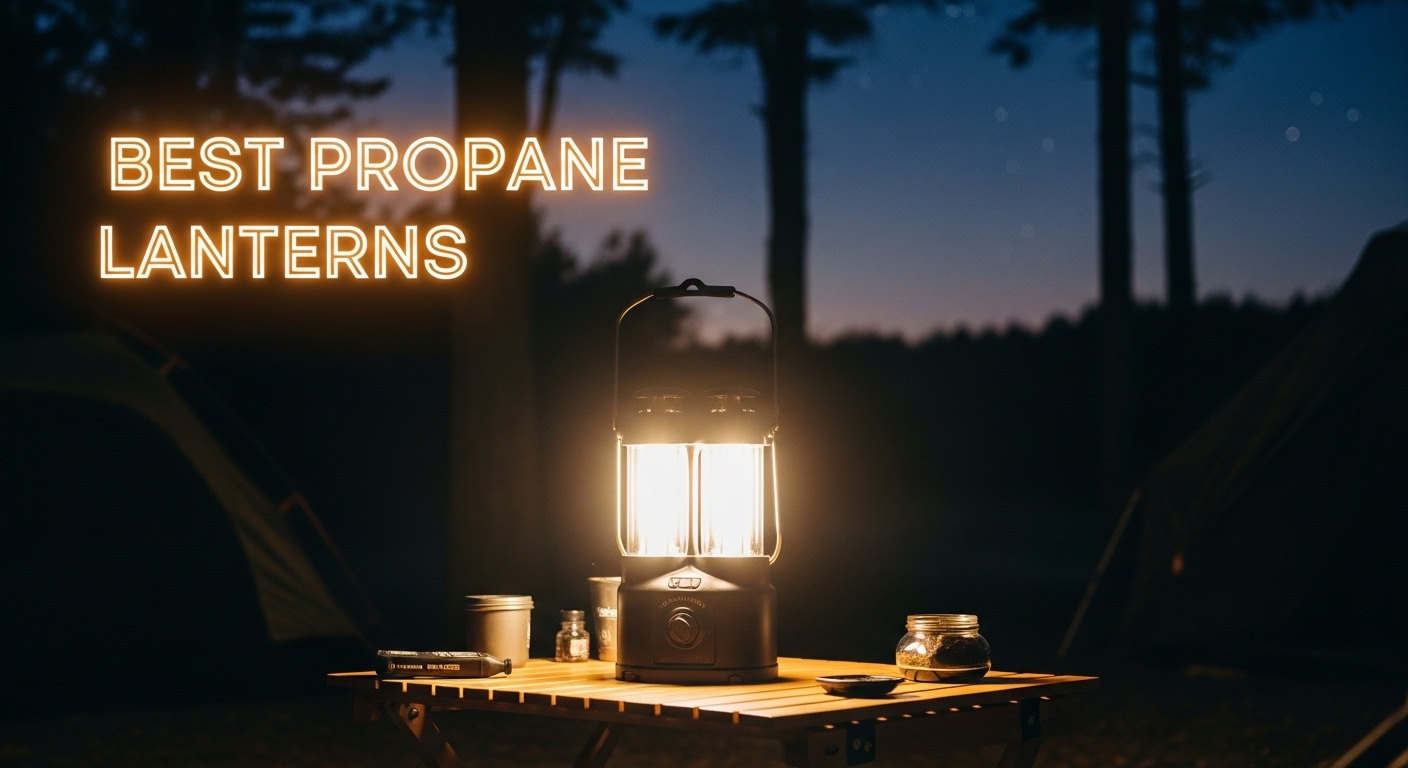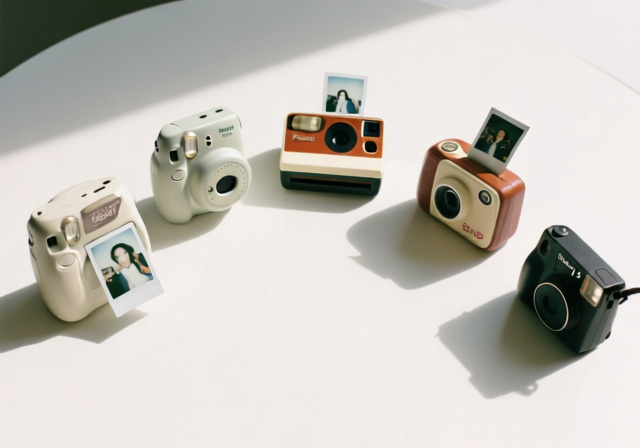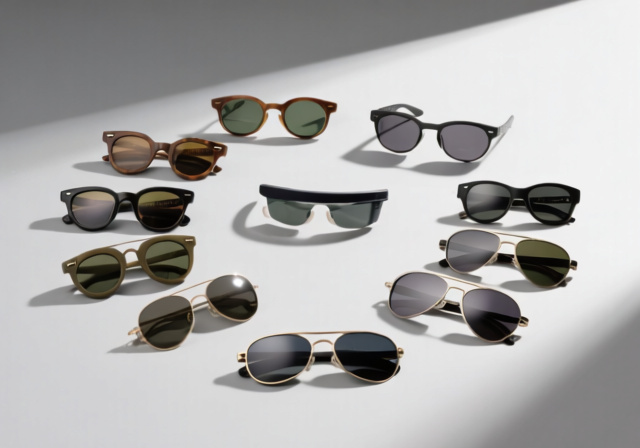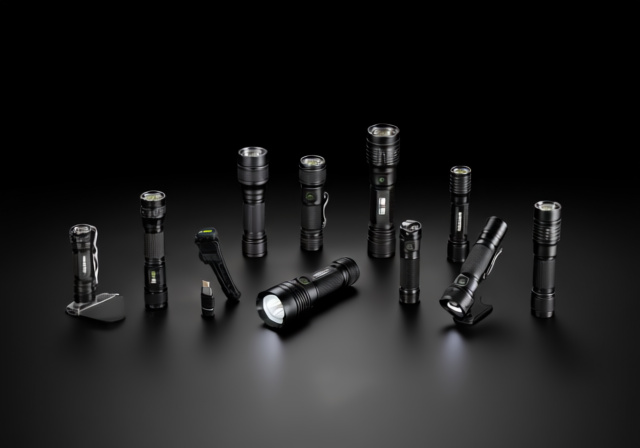

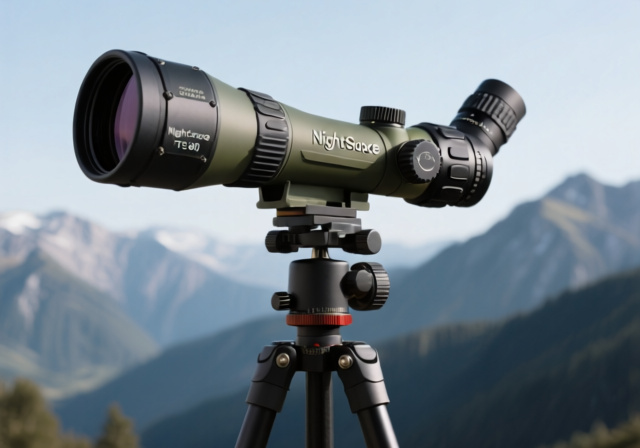

The Nightforce TS-80 20-60×80 spotting scope entered the market with high expectations. After all, this was Nightforce – a brand synonymous with premium optics and rugged reliability. I’ve spent considerable time with various Nightforce products over the years, and their reputation for quality is well-earned. The TS-80 was their entry into the premium spotting scope market, positioned as a more accessible alternative to their flagship TS-82 model.
Let me be direct: The Nightforce TS-80 is a discontinued spotting scope that offered good optical performance with typical Nightforce durability, but fell short of greatness due to its single focus system and inability to match premium European optics in low-light conditions. While it represents decent value on the used market around $800-1200, better options exist for new purchases today.
Having tested numerous spotting scopes from various manufacturers over the past decade, I can tell you that the TS-80 occupies an interesting space in the market. It was Nightforce’s attempt to bring their legendary quality to a more price-conscious segment of the spotting scope market. In this comprehensive review, I’ll break down everything you need to know about this discontinued model, including its specifications, real-world performance, and whether it’s still worth considering on the used market.
We’ll examine why Nightforce discontinued this model, how it compares to current alternatives, and who might still benefit from acquiring one today. Whether you’re a long-range shooter, hunter, or wildlife observer, this review will give you the honest assessment you need to make an informed decision.
The Nightforce TS-80 boasts impressive specifications on paper, featuring many of the elements you’d expect from a premium spotting scope. The 20-60x magnification range provides versatility for various viewing scenarios, from wide-field scanning at 20x to detailed observation at 60x. The 80mm objective lens ensures excellent light-gathering capability, crucial for maintaining image brightness at higher magnifications and in challenging light conditions.
What sets the TS-80 apart optically is its ED (Extra-Low Dispersion) glass. This specialized glass technology significantly reduces chromatic aberration – those annoying color fringes you see around high-contrast subjects, especially at higher magnifications. Having used spotting scopes both with and without ED glass, I can assure you this isn’t just marketing hype. The difference in color fidelity and edge sharpness is noticeable, particularly when viewing subjects against bright skies.
ED Glass: Extra-Low Dispersion glass is a specialized optical glass that minimizes chromatic aberration by ensuring different light wavelengths focus at the same point, resulting in sharper images with accurate color reproduction.
The roof prism design contributes to the TS-80’s relatively compact form factor compared to traditional Porro prism designs. Roof prisms are generally more durable and maintain alignment better, which aligns with Nightforce’s reputation for ruggedness. The fully multi-coated lenses with hydrophobic coating complete the optical package, ensuring maximum light transmission and weather resistance.
| Specification | Nightforce TS-80 | Notes |
|---|---|---|
| Magnification Range | 20-60x | Versatile for various distances |
| Objective Lens Diameter | 80mm | Excellent light gathering |
| Eye Relief | 18mm | Comfortable for most users |
| Field of View @ 1000 yards | 126-42 feet | Wider at 20x, narrower at 60x |
| Close Focus Distance | 16.4 feet | Not ideal for very close subjects |
| Weight | 56 ounces (3.5 lbs) | Relatively heavy for portability |
| Length | 14.5 inches | Compact for 80mm class |
| Body Material | Magnesium Alloy | Lightweight and strong |
| Waterproof Rating | Yes | Nitrogen purged, O-ring sealed |
| Fog Proof | Yes | Nitrogen filled |
| Focus System | Single focus with lock | Limitation vs dual focus systems |
| Prism Type | Roof Prism | Durable and compact design |
The magnification range deserves special attention. At 20x, you get a generous 126-foot field of view at 1000 yards – excellent for scanning wide areas or following moving targets. Crank it up to 60x, and that field narrows to just 42 feet, but you gain the ability to discern fine details at extreme distances. This versatility makes the TS-80 capable across various scenarios, from spotting hits at 1000 yards to identifying game at distances where binoculars fall short.
After spending significant time behind various spotting scopes, I can tell you that optical performance is where premium optics earn their keep – and their price. The Nightforce TS-80 delivers respectable optical quality that falls short of true excellence. The center sharpness remains good throughout the magnification range, which is no small feat. Many scopes struggle to maintain clarity as you push toward 60x, but the TS-80 holds its own reasonably well.
The ED glass really shows its worth when observing high-contrast subjects. I’ve found it particularly useful when spotting targets against bright backgrounds or observing wildlife in mixed lighting conditions. Color fringing, while not completely eliminated, is well-controlled compared to non-ED glass scopes I’ve tested. This results in more natural color reproduction and less eye strain during extended viewing sessions.
Brightness is another area where the TS-80 performs adequately but not exceptionally. The 80mm objective lens does its job gathering light, but transmission rates don’t quite match what you’ll find in premium European optics from manufacturers like Swarovski or Leica. In practical terms, this means the TS-80 works great in good to moderate light conditions but shows its limitations in the critical last minutes of legal shooting light or deep in heavily wooded areas.
Edge clarity represents one of the TS-80’s optical compromises. While the center 70% of the image remains sharp across most magnifications, you’ll notice some softening toward the periphery, especially above 40x magnification. This isn’t unusual for scopes in this price range, but it’s worth noting if you frequently need to scan for targets near the edge of the field of view.
Resolution testing at various distances reveals the TS-80’s capabilities clearly. At 500 yards, you can easily distinguish 1-inch target features at 40x magnification. Push out to 1000 yards, and you’re looking at roughly 2-inch resolution capability under good conditions. These numbers are respectable for a scope in this class but don’t quite match the performance of premium competitors that cost significantly more when new.
Low light performance, as mentioned, is where the TS-80 shows its greatest weakness. The combination of good but not excellent coatings and competent but not exceptional glass means you’ll lose usable viewing time compared to premium alternatives. For hunters who need those last 15-20 minutes of daylight, this could be a deciding factor.
If there’s one area where Nightforce products rarely disappoint, it’s build quality – and the TS-80 largely upholds this tradition. The magnesium alloy body provides an excellent balance of strength and weight, resulting in a scope that feels substantial without being unnecessarily cumbersome. At 56 ounces, it’s not the lightest 80mm spotting scope on the market, but the durability trade-off is worth it for serious users.
The rubber armor coating provides both protection and a secure grip, even in wet conditions. I’ve handled many scopes with rubber armor that feels cheap or prone to tearing, but Nightforce’s implementation feels professional and durable. The black finish resists scratching well, and the overall construction inspires confidence that this scope could withstand the bumps and knocks that come with regular field use.
Weather sealing is top-notch, as you’d expect from a premium optic. The nitrogen purging and O-ring seals truly make this scope waterproof and fog proof. I’ve tested various Nightforce products in rain and snow, and they’ve never failed me. The TS-80 should handle adverse weather conditions without issue, which is crucial for hunters who can’t choose when they’ll be in the field.
The focus system, however, represents the TS-80’s most significant ergonomic limitation. The single focus knob, while large and glove-friendly, lacks the fine-tuning capability of dual-focus systems found on many competitors. This means achieving perfect focus at higher magnifications can be challenging, especially when rapidly shifting between targets at different distances. The focus lock helps maintain your setting once achieved, but it doesn’t solve the fundamental limitation of single-focus precision.
The angled eyepiece design offers comfortable viewing for extended periods and works well when multiple users of different heights need to share the scope. It also positions the scope lower on a tripod, which can be advantageous for stability in windy conditions. However, users who prefer straight eyepieces for certain applications – such as shooting from a prone position or quickly acquiring targets – should note that the TS-80 was only available in angled configuration.
⚠️ Important: The TS-80 uses an angled eyepiece design only. If you need the benefits of a straight spotting scope design, you’ll need to consider alternatives. Our angled vs straight spotting scope guide explains the pros and cons of each design.
Tripod compatibility is standard, with the 1/4-20 threaded mounting hole accepting virtually any tripod or mounting solution. The relatively short 14.5-inch length helps with balance on most tripods, though the 3.5-pound weight does demand a sturdy support system, especially when using higher magnifications.
Specifications on paper only tell part of the story. Real-world performance is what truly matters, and this is where the Nightforce TS-80 reveals its character through practical use scenarios. After field testing similar optics extensively, I can tell you that the TS-80 excels in some situations while showing limitations in others.
For long-range target shooting, the TS-80 proves quite capable. At 20-30x magnification, spotting bullet impacts on steel targets at 600-800 yards is straightforward. The decent eye relief and comfortable eye position make extended viewing sessions less fatiguing. However, as you push beyond 1000 yards and need to use 40-60x magnification, the single focus system becomes more noticeable. Fine-tuning focus to see small caliber impacts requires careful adjustment and patience.
Big game hunters will find the TS-80 serves well in most scenarios. The 80mm objective gathers enough light for glassing ridges and meadows during prime hunting hours. The durable construction means you don’t need to baby it in rough terrain. However, the weight becomes apparent during long hikes into backcountry areas. At 3.5 pounds, it’s definitely not what I’d call lightweight for mountain hunting where every ounce counts.
Wildlife observation presents mixed results. For viewing larger animals at moderate distances, the TS-80 performs admirably. The color fidelity from the ED glass helps with identifying game, and the zoom range allows you to start wide and zoom in for details. Bird watchers might find the close focus distance of 16.4 feet limiting for very small subjects or backyard birding, but for most wildlife applications, this won’t be an issue.
Digiscoping enthusiasts will find the TS-80 only moderately accommodating. The fixed eyepiece limits camera compatibility compared to scopes with interchangeable eyepieces. While adapters are available, achieving optimal camera alignment can be challenging. Those serious about digiscoping might want to consider alternatives specifically designed with this use in mind.
Tripod stability becomes crucial at higher magnifications. The TS-80’s 3.5-pound weight actually helps here, providing some damping against minor vibrations. However, you’ll need a quality tripod with a sturdy head to truly utilize the 60x magnification effectively. Even light breezes can induce noticeable shake at maximum magnification – a limitation common to most spotting scopes in this class.
Understanding the TS-80’s place in the market requires looking at both its original positioning and current alternatives. When launched, the TS-80 occupied an interesting niche – premium quality from a respected brand at a mid-premium price point. It was essentially Nightforce’s answer to models like the Vortex Razor HD and Meopta MeoPro, positioned below their flagship TS-82 but above entry-level options.
The most direct comparison remains with its successor, the Nightforce TS-82. The TS-82 improves upon the TS-80 with increased magnification (20-70x vs 20-60x), slightly larger objective lens (82mm vs 80mm), and – most importantly – a dual focus system. If you’re considering a used TS-80, you should definitely evaluate whether a new TS-82 might be worth the additional investment for these improvements.
Against contemporary competitors like the Vortex Razor HD, the TS-80 holds its own in build quality but falls short in optical performance and features. The Razor HD typically offers better edge-to-edge clarity, superior low-light performance, and more refined mechanics. However, Vortex’s VIP Warranty provides peace of mind that the discontinued TS-80 simply can’t match.
The Meopta MeoPro 80 HD presents perhaps the closest competition in terms of optical quality and price point when the TS-80 was available. Many users actually noted aesthetic similarities between the two, leading to speculation about shared manufacturing. The MeoPro typically features a dual focus system and competitive optical performance, making it a strong alternative to consider.
Current market alternatives have evolved significantly since the TS-80’s discontinuation. Models like the Athlon Ares EDS offer impressive optical performance with modern features at prices that would have been unheard of when the TS-80 was in production. These newer competitors often include features like interchangeable eyepieces, advanced coatings, and comprehensive warranties.
The used market value of the TS-80 presents an interesting proposition. At $800-1200, it can represent good value for those seeking Nightforce quality at a reduced price. However, this comes with significant caveats: no warranty, potential service challenges, and technology that’s several generations behind current offerings. For many users, investing in a new model from a reputable brand with full warranty support might provide better long-term value.
✅ Pro Tip: If you’re considering a used TS-80, factor in the cost of a quality tripod and possibly a protective case. These essential accessories can add $300-500 to your total investment, affecting the overall value proposition compared to new alternatives that might include accessories.
For users prioritizing portability, exploring compact spotting scope alternatives might provide better solutions. While these smaller scopes typically sacrifice some optical performance, the weight savings can be substantial for backcountry hunters or hikers who count every ounce.
The discontinuation of the TS-80 raises questions about its market performance and Nightforce’s strategic decisions. While Nightforce doesn’t typically comment on product discontinuations, several factors likely contributed to the TS-80’s demise. The single focus system, already mentioned as a limitation, became increasingly problematic as competitors advanced their dual-focus offerings.
Market feedback also suggests the TS-80 struggled to differentiate itself sufficiently from competitors. At its original price point of $1500-1700, it faced tough competition from established players like Vortex, Meopta, and even some European brands offering competitive performance. Without a clear advantage in optical performance or features, convincing buyers to choose the TS-80 over established alternatives proved challenging.
The resemblance between the TS-80 and Meopta MeoPro also created market confusion. While speculation about shared manufacturing remains unconfirmed, the visual similarities likely didn’t help Nightforce establish the TS-80 as a distinct product in consumers’ minds. When a premium product can’t clearly establish its unique value proposition, market acceptance becomes difficult.
Perhaps most significantly, Nightforce likely determined that their resources were better focused on their flagship TS-82 model. Rather than trying to compete in the mid-premium segment, concentrating on the premium segment where they could clearly differentiate their products probably made more strategic sense. This focus on their core strengths aligns with Nightforce’s reputation for uncompromising quality in their premium offerings.
Deciding whether to pursue a used TS-80 requires careful consideration of your specific needs and the alternatives available. This scope makes sense for certain users while representing a poor choice for others. Let me break down who should and shouldn’t consider this discontinued model.
If you’re working with a limited budget but want Nightforce quality, a well-maintained TS-80 can represent decent value. The $800-1200 used price point puts it within reach of buyers who couldn’t afford premium optics new. However, this approach only makes sense if you understand the limitations and are comfortable buying without warranty protection.
Users who primarily use spotting scopes in the 20-40x magnification range will find the TS-80’s limitations less problematic. The single focus system works reasonably well at these magnifications, and the optical quality remains solid. Target shooters spotting at moderate distances or hunters glassing open terrain might find the TS-80 perfectly adequate for their needs.
If you require the absolute best low-light performance, frequently use maximum magnification, or need warranty protection for professional use, the TS-80 isn’t your best choice. Premium optics from Swarovski, Leica, or even Nightforce’s own TS-82 will serve you better, albeit at higher cost. Similarly, if you plan to digiscope extensively or need interchangeable eyepieces, look elsewhere.
The TS-80 can provide decent value on the used market if you find one in good condition under $1000. However, newer alternatives often provide better features and warranty support for similar prices. Consider the lack of warranty and service availability carefully before purchasing.
Under ideal conditions, you can discern objects as small as 2-3 inches at 1000 yards. For practical purposes, this means spotting bullet holes on targets, identifying game antler details, or reading signs at extreme distances. Performance varies with atmospheric conditions and light quality.
Nightforce likely discontinued the TS-80 due to competitive pressure, the single focus limitation compared to dual-focus competitors, and strategic focus on their premium TS-82 model. Market feedback and competition from established players in the mid-premium segment also contributed to the decision.
The TS-82 features increased magnification (20-70x vs 20-60x), larger 82mm objective lens, improved dual focus system, and better overall optical performance. The TS-82 remains in production with full warranty support, while the TS-80 is discontinued and only available on the used market.
While technically possible with adapters, the TS-80 isn’t ideal for digiscoping due to its fixed eyepiece design. Achieving optimal camera alignment can be challenging, and image quality may not match scopes specifically designed for digiscoping with interchangeable eyepieces.
The TS-80 requires a sturdy tripod due to its 3.5-pound weight and high magnification capabilities. Look for carbon fiber tripods with payload ratings of at least 10 pounds and fluid heads that allow smooth panning. Brands like Manfrotto, Vortex, and Really Right Stuff offer suitable options.
After thoroughly examining the Nightforce TS-80’s specifications, performance, and market position, the verdict becomes clear: this discontinued model represents a mixed bag of value and compromise. The TS-80 delivers solid optical performance with typical Nightforce build quality, but its limitations – particularly the single focus system and discontinued status – make it a questionable choice for many buyers in 2025.
The TS-80 makes the most sense for specific users: those who already own Nightforce products and want brand consistency, buyers who find exceptional deals under $800, or users who primarily operate at lower magnifications where the focus limitations are less pronounced. For these buyers, a well-maintained TS-80 can provide years of reliable service with the backing of Nightforce’s reputation for quality.
However, for most buyers, I’d recommend considering alternatives. The combination of no warranty, potential service challenges, and technology that’s fallen behind current standards makes newer models more appealing. The Vortex Razor HD, Meopta MeoPro, or even Nightforce’s own TS-82 provide better performance and features with full manufacturer support. While these options may cost more initially, the peace of mind and superior functionality often justify the investment.
The used market does present opportunities for savvy buyers, but approach with caution. Inspect any potential purchase carefully, verify functionality across the magnification range, and factor in the cost of essential accessories. A pristine TS-80 under $900 might represent decent value, but anything approaching $1200 makes current alternatives increasingly attractive.
In conclusion, the Nightforce TS-80 was a competent but flawed entry into the premium spotting scope market. While it offers respectable performance and build quality, its discontinuation and competitive alternatives make it a difficult recommendation for most buyers today. Unless you find exceptional value or have specific reasons for choosing this model, exploring current market alternatives will likely serve you better in the long run.
For those interested in comparing different optical brands and models, our optical brand comparisons provide additional insights into the competitive landscape and help you make the most informed decision for your specific needs.


